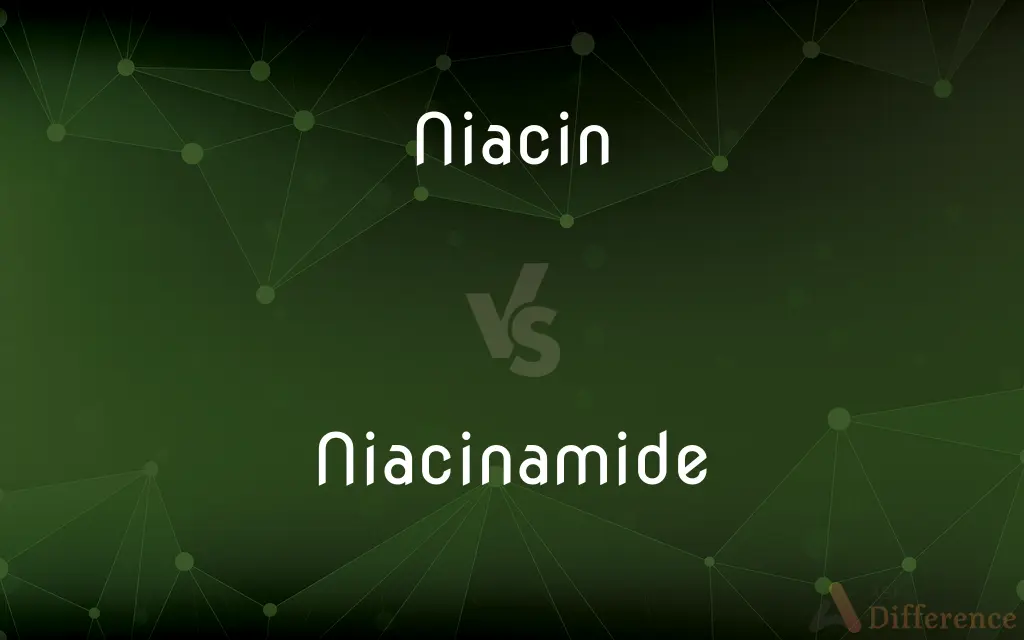Niacin vs. Niacinamide — What's the Difference?

Difference Between Niacin and Niacinamide
ADVERTISEMENT
Compare with Definitions
Niacin
Niacin, also known as nicotinic acid, is an organic compound and a form of vitamin B3, an essential human nutrient. It can be manufactured by plants and animals from the amino acid tryptophan.
Niacinamide
(organic compound) The amide of niacin.
Niacin
A white crystalline acid, C6H5NO2, of the vitamin B complex that is found in meat, fish, legumes, and whole-grain foods and is used to treat and prevent pellagra. Also called nicotinic acid.
Niacinamide
The amide of niacin (nicotinic acid), called also nicotinamide. It was at one time called vitamin B3, and can function to relieve nicotinic acid deficiency. Chemical formula C6H6N2O, chemically it is 3-pyridinecarboxamide.
Niacin
(vitamin) A water-soluble vitamin, a component of vitamin B complex, found in meat, yeast, and dairy products; it is essential to metabolism.
ADVERTISEMENT
Niacin
A B vitamin (vitamin B5) essential for the normal function of the nervous system and the gastrointestinal tract. Called also nicotinic acid and antipellagra vitamin. Chemical formula C6H5NO2, chemically it is 3-pyridinecarboxylic acid.
Niacin
A B vitamin essential for the normal function of the nervous system and the gastrointestinal tract
Share Your Discovery

Previous Comparison
Supranatural vs. Supernatural
Next Comparison
Have vs. Take













































